Di Fara Pizza isn’t just food—it’s a New York institution. For over 50 years, Dom DeMarco’s tiny Brooklyn shop has drawn queues of pizza pilgrims craving its charred crust, tangy tomato sauce, and perfect cheese balance. Here’s what sets it apart (and how to recreate the magic without waiting in line for hours).

Di Fara Pizza – Brooklyn’s Iconic Homemade Clone
Equipment
- 1 Baking Steel/Stone Critical for crispy crust
- 1 Pizza Peel For transferring dough
- 1 Dough Scraper Helps shape and portion dough
Ingredients
- 500 g Italian 00 Flour Italian 00 Flour
- 325 ml Water (65°F) Cold for slow fermentation
- 10 g Sea Salt Fine grain dissolves evenly
- 3 g Active Dry Yeast Or 2g instant yeast
- 400 g San Marzano Tomatoes Hand-crushed, no blender
- 200 g Low-Moisture Mozzarella Grande brand preferred
- 50 g Parmigiano-Reggiano Freshly grated
- 10 leaves Fresh Basil Torn by hand post-bake
- 30 ml Extra-Virgin Olive Oil High-quality finish
Instructions
- Step 1: Mix dough (flour, water, yeast, salt) until shaggy. Rest 30 mins.
- Step 2: Knead 10 mins, then ferment 48 hours in fridge.
- Step 3: Hand-crush tomatoes with salt (no cooking).
- Step 4: Stretch dough, top with sauce + mozzarella. Bake at 550°F for 8 mins.
- Step 5: Add Parmesan, basil, and EVOO post-bake.
Expert Secrets
- The Flour Matters: Only Italian 00 flour delivers Di Fara’s chewy-yet-crispy crust.
- Low & Slow Sauce: Simmer San Marzano tomatoes with just salt and basil—no garlic or sugar.
- Two-Cheese Rule: Low-moisture mozzarella before baking, fresh Parmesan after.
- Hand-Torn Basil: Scatter fresh leaves post-bake for aroma (Dom’s signature move).
- 48-Hour Dough: Fermenting this long develops complex flavor and air pockets.
- Bake Like a Pro: Use a steel at 550°F+ and rotate for even charring.
- Finish with EVOO: A drizzle of high-quality olive oil elevates every bite.
Storage & Reheating
Keep It Fresh:
- Store leftover Di Fara Pizza in parchment-lined containers (max 2 days).
- Freeze dough balls in oiled bags for 1 month—thaw overnight before stretching.
Reheat Like NYC:
- Skillet + Lid: Medium heat for 3 mins to revive the crunch.
- Oven at 400°F: 5 mins on a wire rack (avoids sogginess).
Variations
- Di Fara Square Pie: Sicilian-style thick crust with sauce on top.
- White Di Fara: Ricotta, garlic oil, and roasted mushrooms.
- Spicy Honey Drizzle: Hot soppressata + honey post-bake (trendy twist).
- Whole-Wheat Hybrid: Substitute 20% whole wheat flour for nuttiness.
- Breakfast Pizza: Top with eggs, pancetta, and scallions.
Perfect Pairings
- Starter: Marinated olives and roasted almonds.
- Drink: Peroni beer or Lambrusco (sparkling red wine).
- Dessert: Affogato (espresso + vanilla gelato).
Nutrition (Per Classic Slice)
| Calories | 290 |
| Fat | 10g |
| Carbs | 36g |
| Protein | 12g |
| Sodium | 620mg |
Conclusion
There’s a reason foodies pilgrimage to Brooklyn for Di Fara Pizza – that perfect harmony of crispy-yet-chewy crust, bright tomato sauce, and creamy melted cheese is simply unmatched. While nothing beats the original, this carefully crafted recipe brings Dom DeMarco’s magic to your home kitchen. Yes, the 48-hour fermentation demands patience, but that first bite of your homemade masterpiece – with its blistered crust, gooey cheese, and fragrant basil – makes every minute worthwhile. Share your creation with #DiFaraAtHome and join the legion of fans who’ve fallen for this iconic slice!
FAQ’s
Why is Di Fara Pizza so famous?
Dom’s obsessive attention to detail—hand-grating cheese, custom-blending flour, and 50+ years of consistency.
What cheese does Di Fara use?
Grande mozzarella (low-moisture) and freshly grated Parmigiano-Reggiano.
Can I make Di Fara Pizza in a home oven?
Yes! Use a baking steel and preheat at max temp for 1+ hour.
Why is the basil added after baking?
Preserves its fresh aroma and color (cooked basil turns bitter).
What’s the best flour substitute for 00?
Bread flour + 1 tbsp cornstarch per cup (closest texture hack).
How does Di Fara get their crust so crisp?
High heat (800°F+ in their oven) and minimal sauce moisture.
Is Di Fara Pizza cash-only?
Yes—bring bills if visiting the original location.
What’s the wait time at Di Fara?
1–2 hours (they make each pizza to order).
Why is the sauce so bright?
Uncooked San Marzano tomatoes (just crushed and salted).
Can I order Di Fara Pizza shipped?
No, but Emmymade’s YouTube tutorial is the best DIY clone.




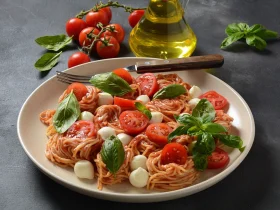
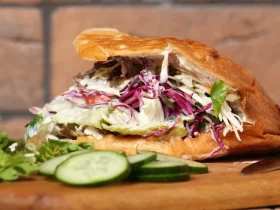
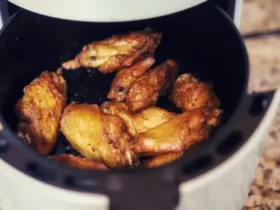


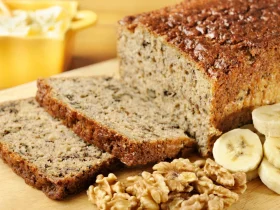
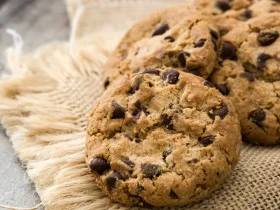
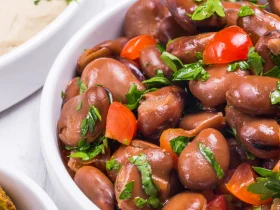
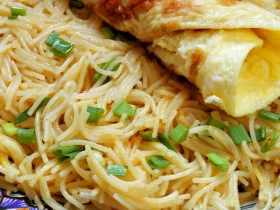

Leave a Reply